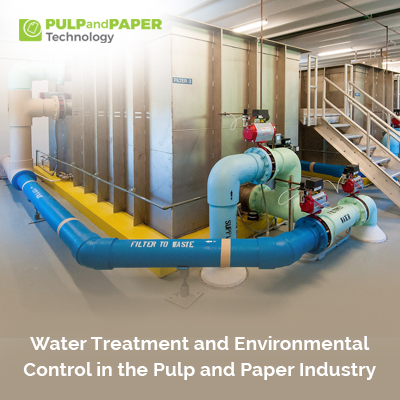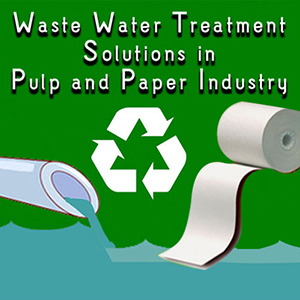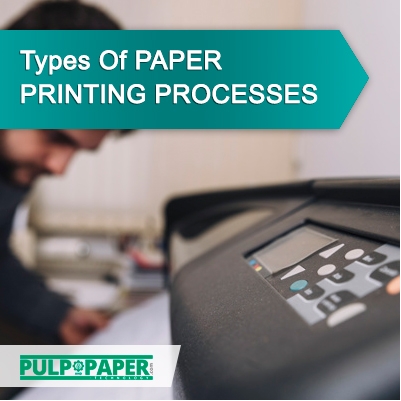Water Treatment and Environmental Control in the Pulp and Paper Industry

Introduction:
The pulp and paper industry plays a pivotal role in providing essential materials for various applications, from packaging to printed materials. However, the production processes involved in this industry often generate significant environmental challenges, particularly in terms of water usage and pollution. As environmental concerns continue to gain prominence, it becomes crucial for the pulp and paper sector to adopt sustainable practices. In this article, we will delve into the intricacies of water treatment and environmental control in the pulp and paper industry, exploring the current challenges, innovative solutions, and the industry's role in achieving a balance between production and environmental stewardship.
Water Usage in Pulp and Paper Production
Water is a fundamental component of the pulp and paper manufacturing process. From wood processing to papermaking, water is utilized at various stages, presenting both opportunities and challenges for sustainable practices. The high demand for water in the industry has drawn attention to the need for efficient water management and treatment strategies.
Wood Processing: The journey of paper begins with the processing of wood into pulp. This phase involves the extraction of cellulose fibers from wood, typically done through chemical or mechanical pulping. Both methods require substantial amounts of water to break down the lignin and separate the fibers. Chemical pulping, though more efficient, produces wastewater rich in chemicals like lignin, which must be treated before discharge.
Papermaking: Once the pulp is obtained, it undergoes further processes such as bleaching, paper formation, and drying. Each of these steps involves water, and the effluents generated can contain residues from chemicals and suspended solids. Proper treatment of this wastewater is vital to prevent pollution and protect aquatic ecosystems.
| Also Read: Latest Innovations Driving Water Treatment in Paper Mills |
Challenges in Water Treatment
The pulp and paper industry faces several challenges in water treatment and environmental control:
Chemical Pollution: Chemicals used in pulping, bleaching, and other processes can pose a threat to water quality. Effluents containing chlorinated compounds, solvents, and other chemicals must be treated to meet environmental regulations.
Solid Waste Management: The industry generates significant amounts of solid waste, including sludge from water treatment processes. Proper disposal or, preferably, reuse of these by-products is crucial for minimizing environmental impact.
Energy Consumption: Water treatment processes often require substantial energy inputs. Finding energy-efficient methods for water treatment is essential to reduce the overall environmental footprint of the industry.
Water Scarcity: In regions experiencing water scarcity, the high water consumption of pulp and paper mills can exacerbate local water stress. Implementing water recycling and conservation measures becomes imperative in such areas.
Innovative Solutions for Water Treatment
To address these challenges, the pulp and paper industry has been actively exploring and implementing innovative solutions for water treatment and environmental control:
Closed-Loop Systems: Closed-loop water systems, where water is recycled within the production process, can significantly reduce water consumption. By treating and reusing water, mills can minimize their impact on local water resources.
Advanced Oxidation Processes: Employing advanced oxidation processes (AOPs) for wastewater treatment can effectively break down organic pollutants. These methods utilize powerful oxidants like ozone or hydrogen peroxide to enhance the degradation of contaminants.
Biological Treatment: Biological treatment methods, such as activated sludge systems and constructed wetlands, leverage the natural activity of microorganisms to break down organic matter in wastewater. These environmentally friendly approaches help reduce the reliance on chemical treatments.
Zero Liquid Discharge (ZLD): ZLD systems aim to eliminate liquid discharge by recovering and reusing all water from the manufacturing processes. While challenging to implement, ZLD can significantly reduce the environmental impact of wastewater discharges.
Green Chemistry Practices: Implementing green chemistry principles in the production processes can lead to the development of eco-friendly chemicals and processes, minimizing the environmental impact of chemical usage in the industry.
Role of Regulations and Certifications
Government regulations and industry certifications play a crucial role in driving the adoption of sustainable practices in the pulp and paper sector. Environmental agencies set discharge limits for pollutants, and compliance is mandatory for industry players. Additionally, certifications such as the Forest Stewardship Council (FSC) and the Programme for the Endorsement of Forest Certification (PEFC) promote responsible forest management, ensuring a sustainable supply chain for the industry.
Moreover, adhering to standards like the ISO 14001 for environmental management systems encourages companies to continuously improve their environmental performance. By meeting these standards, the pulp and paper industry not only mitigates environmental impact but also enhances its reputation and market competitiveness.
Industry Initiatives and Collaborations
Acknowledging the need for collective action, the pulp and paper industry has seen various initiatives and collaborations aimed at advancing sustainable practices:
Water Efficiency Programs: Many pulp and paper companies participate in water efficiency programs that focus on reducing water consumption and improving water management practices. These initiatives often involve the exchange of best practices among industry peers.
Research and Development: Investing in research and development of new technologies and processes is critical for the industry's sustainable transformation. Collaborative research projects and partnerships with academic institutions contribute to the development of innovative solutions for water treatment and environmental control.
Supply Chain Sustainability: Engaging with suppliers to ensure the sustainability of raw materials is another important aspect of the industry's efforts. By promoting responsible forestry practices and sourcing materials from certified suppliers, companies can enhance the overall sustainability of their supply chains.
Balancing Production and Environmental Stewardship
Achieving a balance between production and environmental stewardship is essential for the long-term viability of the pulp and paper industry. This involves not only adopting advanced water treatment technologies but also integrating sustainability into every aspect of the production process. Key strategies for achieving this balance include:
Circular Economy Approach: Embracing a circular economy approach involves minimizing waste generation, maximizing resource efficiency, and promoting the reuse and recycling of materials.
By closing the loop on water and materials, the industry can contribute to a more sustainable and resilient future.
Life Cycle Assessment (LCA): Conducting a life cycle assessment helps evaluate the environmental impact of the entire production process, from raw material extraction to product end-of-life. This holistic approach enables companies to identify hotspots and implement targeted improvements for overall sustainability.
Continuous Improvement: The journey towards sustainability is ongoing. Regularly assessing and improving environmental performance, incorporating feedback from stakeholders, and staying abreast of technological advancements are crucial for maintaining a balance between production demands and environmental responsibility.
Conclusion
Water treatment and environmental control in the pulp and paper industry are integral components of a broader effort to achieve sustainability. As the industry faces increasing scrutiny and demands for responsible practices, embracing innovative technologies, collaborating with stakeholders, and adhering to stringent regulations will be key to ensuring a harmonious balance between production and environmental stewardship. By taking a proactive approach and integrating sustainability into their core business strategies, pulp and paper companies can not only reduce their environmental impact but also contribute to a more sustainable future for the industry as a whole.









